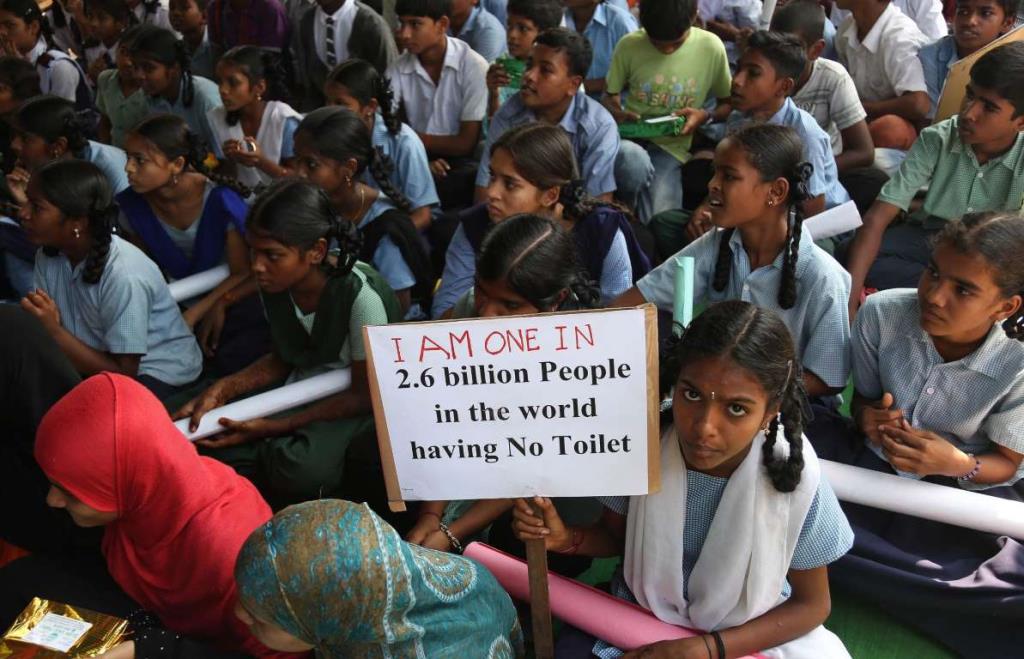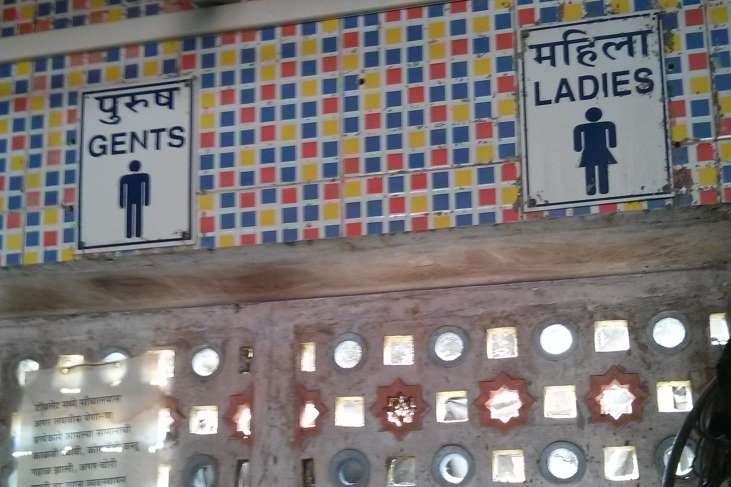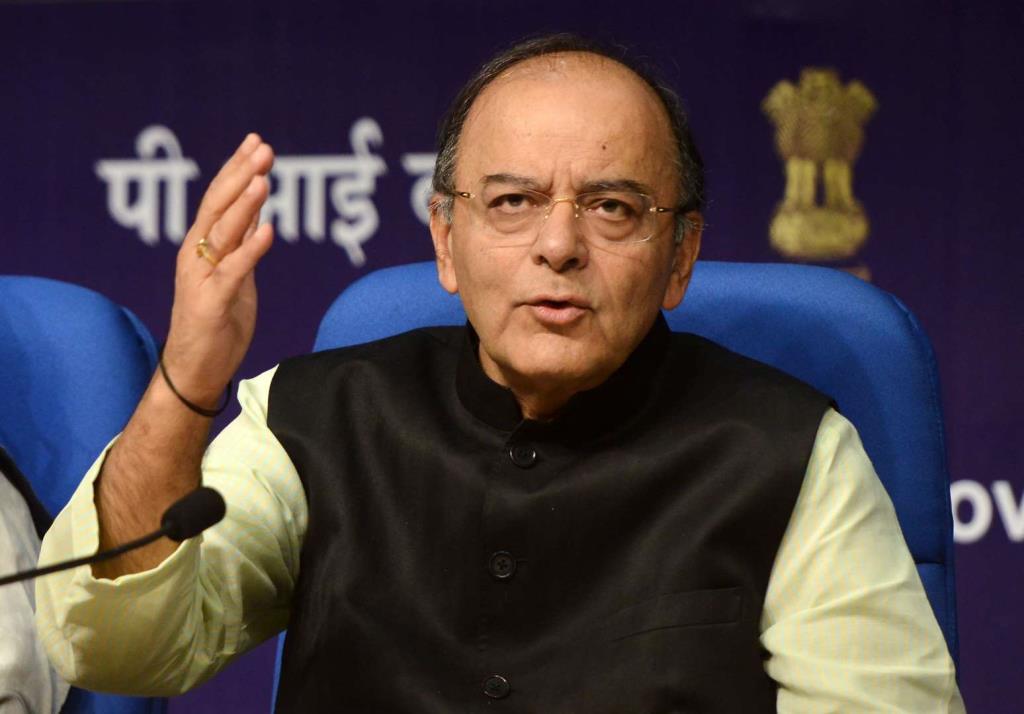November 26, 2014
When you spot images of gods or deities on store shutters or the walls of people’s houses in India, it’s usually not because the owners are pious. The pictures are probably there to dissuade men from peeing.

Indian school children participate in a rally to mark World Toilet Day in Hyderabad, India, Wednesday, Nov.19, 2014.
November 26, 2014
When you spot images of gods or deities on store shutters or the walls of people’s houses in India, it’s usually not because the owners are pious. The pictures are probably there to dissuade men from peeing.

Indian school children participate in a rally to mark World Toilet Day in Hyderabad, India, Wednesday, Nov.19, 2014.
But, apparently, many men don't mind peeing in front of the divine. You’ll see the backs of men lining roads, walls or shrubs at any time of day. There’s no shame — when a man's gotta go, a man's gotta go.
It's not quite that easy for Mumbai's five million women. More than half of women here don’t have indoor toilets. In a typical Mumbai slum, there are something like six bathrooms for 8,000 women. Sometimes those bathrooms have collapsed, have dogs or rats living in them, or simply have no water.
Sarita, who works as a cook, gets to a bathroom maybe three times a day — if she’s lucky. She wakes up at 5:30 every morning to line up to use the facilities.
“I leave home at seven and I have to wait until I get back home — sometimes it’s nine hours, sometimes 12,” she says. “My stomach hurts when I hold it, but what can I do? Men can go anywhere, but where can a woman go?”
According to government figures, Mumbai has 3,536 public restrooms that women share with men, but not a single women’s-only facility — not even in some police stations and courts. Enter the Right To Pee movement, a coalition of NGOs fighting for more — and safer — toilets for women.
Deepa Pawar, an activist from a women’s rights organization called Vacha, has collected horror stories over the past three years about how the lack of toilets hurts women in Mumbai.
Some women get bladder and urinary tract infections from holding in their urine, while others simply don't drink water all day to avoid the bathroom. Many women are raped or assaulted each year when they leave their homes to find a toilet, and those who find toilets safely can face other risks — scorpions, rats, infections.

And there are the larger societal issues as well: “The number one reason that girls drop out of school is because there are no toilets," Pawar points out.
“We want to be able to take care of our basic needs like men do, and not like animals," she says. "These are basic, human rights — the right to dignity and the right to mobility.”
Pawar says the government simply lacks the will to fix the problem. “The government has manpower, resources, strategy, authority,” she says, but no accountability.
And along with apathy comes gender bias: “When we approached the authorities, they asked us, 'Do women even go out? Where do they have to go?’" Pawar says. "There’s no sensitization that women work or go outside the home!”
There's also one other major problem: Even if women can find a toilet that's clean enough to use, they have to pay to use it.
Mumtaz, a woman whose slum has one facility for every 300 women, pays to use the toilet at the Sewri bus depot. “I come here twice a day,” she says, “once at about 10 or 11 to bathe, and once in the evening before I go home. Of course they make me pay.”
The rate here is two rupees, or about 3 cents, for the toilet, and 10 rupees for the bath. It’s only a few cents, but it adds up, especially if you make less than a dollar a day and are the mother of a few girls.
So why the charge? According to the manager of one facility, it's because women waste water — unlike men, who can simply use a urinal that has no water.
Pawar tried to tell him the government has mandated that women can at least pee for free. He merely shrugged and said he has to cover his costs.
Pawar says such a basic need shouldn’t come at a cost. “Maybe they can sell monthly passes, to help with the facility upkeep, but it shouldn’t cost so much,” she says. “Think about the college student who doesn’t earn yet. She has to ask her father for money to use the toilet. Parents already reproach girls and ask, ‘How many times will you go?’”
There is some hope on the horizon. Thanks to public pressure and a change in government, India's parliament formed subcommittee this month to look into a woman’s right to pee. In addition to cheap, clean facilities, they’re talking about getting female attendants, trash cans and running water.
I’m not holding my breath, though. Or rather, I am — at least when I see a man standing against the wall of a building with his back turned.
Courtesy: PRI
















































































































